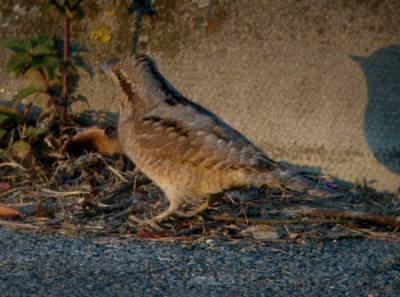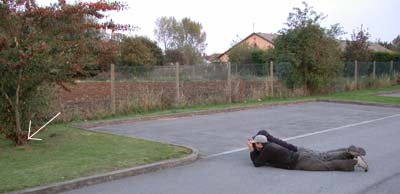
That's
Gibraltar Point, Skegness, Lincolnshire, not Gibraltar in sunny southern Europe... At the
East Midlands Ringers' Conference last month, Mark Grantham gave an entertaining talk about ringing at Gib, and issued a general invitation to everyone to visit. So I thought it might be fun...
Sunday morning started amazingly well, with the first bird out of the net being a female
Firecrest! I hadn't even handled a
Goldcrest before, never mind a
Firecrest...

I thought that was pretty good, so I texted Chris (my trainer) to let him know of my good fortune. He replied: "I haven't ringed
Firecrest! If you ring a Pallas's, you're sacked!"
Other birds trapped on Sunday included
Blackbird,
Goldcrest,
Goldfinch,
Robin,
Dunnock,
Long-tailed Tit and
Blackcap.
 Click for the bigger picture
Click for the bigger picture
Monday morning saw more
Goldcrests trapped in nets set among the sea buckthorn, plus
Redwing,
Reed Bunting,
Robin,
Garden Warbler,
Great Tit,
Blackbird,
Goldfinch,
Dunnock,
Linnet,
Great Spotted Woodpecker and
Wren. Oh, and this male
Sparrowhawk...

 Spadgerbasher
Spadgerbasher meets Mr G
That would have been a ringing 'tick' for me, had it not been for the arrival of a BBC film crew who wanted to film what we were doing. So Mark did the honours (doing very well not to swear too much when the talons got stuck in his hand). My day will come... The bird can be aged as a first-winter by the rusty-brown fringes to its feathers.

I did get to ring this female
Great Spotted Woodpecker, though. Always very interesting (and noisy) birds to handle.

These
Great Tits were intriguing. The one on the right above (left below) is very obviously a male (because of its broad belly stripe) and is much brighter than the other individual, which couldn't be sexed conclusively.

On Tuesday we had a couple of nets in the garden of Kevin Wilson, the Gib warden. Though the one by his feeders wasn't enormously productive (having said that, my fingers still sting from the pecking of the
Blue and
Great Tits...), we had a bit more success with a net just over the fence in the buckthorn. As well as lots more new
Goldcrests, we trapped
another female
Firecrest, just missing out on a third which bounced out! Other birds included
Blackbird and
Song Thrush. A
Waxwing flew over calling and a male
Brambling perched nearby.

Yes, it's true - Skegness
is so bracing. So bracing, in fact, that Tuesday night's planned wader-ringing session had to be abandoned due to high winds. You can't win all the time...
Thanks to Mark G for being so helpful and patient, and also to the Tit Boys (Stuart Sharpe and Andy McGowan), Mark Brown and Kev and the Gib staff.
photos taken with
Nikon Coolpix 995












